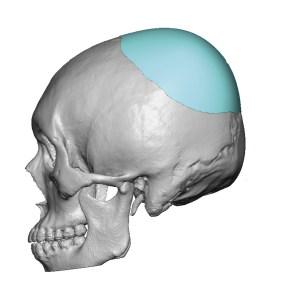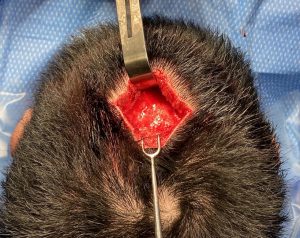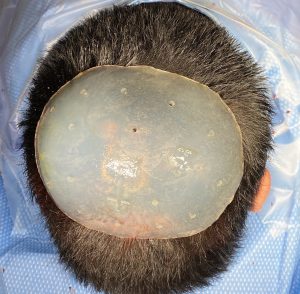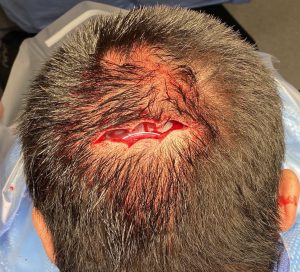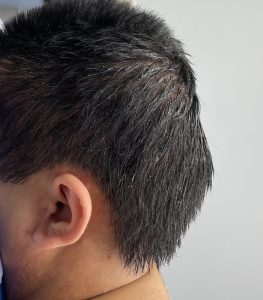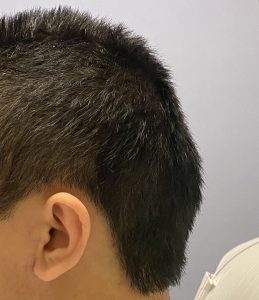Background: The back of the head and concerns about its shape account for almost half of aesthetic skull reshaping patients in my experience. Concerns typical involve asymmetries from plagiocephaly, various types of occipital bone protrusions (knobs and buns) and flattening of part or all of the back of the head. The two techniques for back of head reshaping are one burring/shaving and implant augmentations. In the vast majority of cases only one skull shape problem exists which requires a single surgical technique.
But infrequently a combination of shape issues can affect one surface of the head. Most commonly in my experience it is the back of the head where this occurs because its overall shape is caused by the union of three skull bones, the solitary occipital and the paired parietal bones.
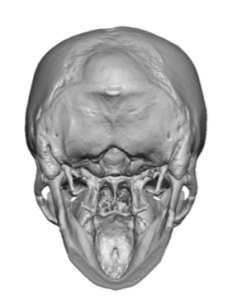
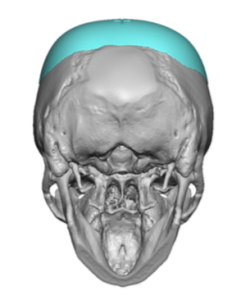
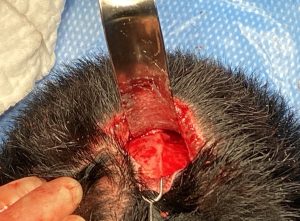




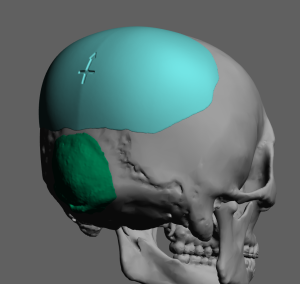
Case Highlights:
1) The back of the head can be affected by flattening and bony protrusion shape deformities…and in some rare patients both may occur simultaneously.
2) The occipital bone is prone to develop protrusions known as a bun while the upper back of the head (parietal bones) is prone to develop a flat area.
3) A 3D CT scan can accurately plan for an occipital bun reduction and a custom skull implant above it for a smooth and improved back of head shape in profile.
Dr. Barry Eppley
World Renowned Plastic Surgeon





